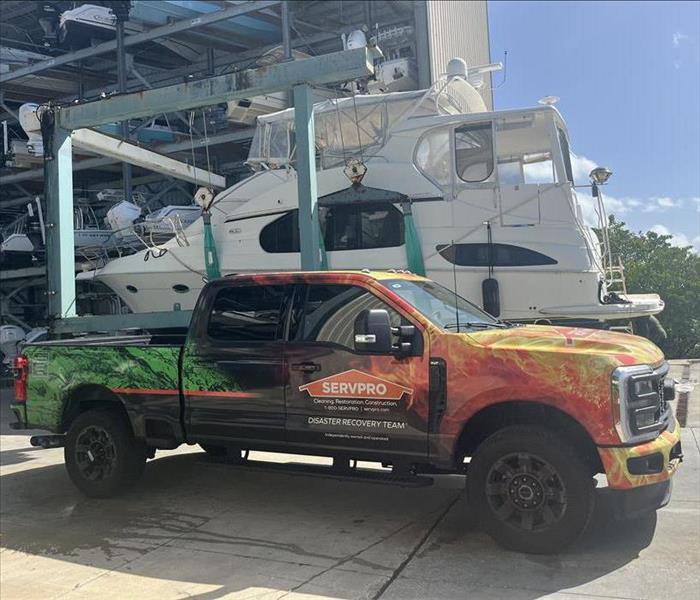Is Your Home at Risk? What to Know About Flood Plains and Water Damage
10/14/2024 (Permalink)
 Whether you need advice on flood prevention or require water damage restoration services, SERVPRO of Temple Terrace is here to help.
Whether you need advice on flood prevention or require water damage restoration services, SERVPRO of Temple Terrace is here to help.
Living in Florida offers many benefits, but it also comes with the risk of flooding, especially if your home or business is located in a floodplain. Understanding the implications of being in a floodplain is crucial for protecting your property and ensuring you have the right insurance coverage. In this blog, we’ll explore what you need to know about floodplains, how they impact water damage risk, and steps you can take to protect your home.
What is a Floodplain?
A floodplain is an area of land adjacent to a river, stream, or other body of water that is prone to flooding. These areas are naturally low-lying and tend to collect water during heavy rains, storms, or hurricanes. In Tampa, many areas are designated as floodplains due to the region’s geography and proximity to water bodies like Tampa Bay and the Hillsborough River.
Understanding Flood Zones
Floodplains are categorized into different flood zones based on the likelihood of flooding. The Federal Emergency Management Agency (FEMA) designates these zones, and they play a significant role in determining your flood insurance requirements and premiums. For example:
- Zone A: High-risk areas where flooding is likely during a 100-year flood event.
- Zone B and C: Moderate- to low-risk areas where flooding is less likely but still possible.
- Zone V: Coastal areas at risk for storm surge in addition to flooding.
The Impact of Floodplains on Water Damage Risk
Living in a floodplain significantly increases your risk of experiencing water damage. Flooding can occur with little warning, and the damage can be extensive. Even a small amount of water can cause serious problems. According to FEMA, just one inch of water can cause up to $25,000 in damage to your home.
Insurance Considerations
If your property is in a high-risk flood zone, your mortgage lender will likely require you to have flood insurance. Even if it’s not required, it’s wise to consider purchasing flood insurance if you live in or near a floodplain. Standard homeowner’s insurance policies typically do not cover flood damage, so having a separate flood insurance policy is crucial for financial protection.
How to Protect Your Home in a Floodplain
While you can’t change your property’s location, there are several steps you can take to lower the risk of water damage if you live in a floodplain.
- Elevate Your Home
One of the most effective ways to protect your home from flooding is by elevating it above the base flood elevation (BFE). This reduces the likelihood of floodwaters entering your home and can also lower your flood insurance premiums.
- Install Flood Vents
Flood vents allow water to flow through your home’s foundation, reducing pressure and the risk of structural damage. These vents are particularly useful in preventing water buildup in crawl spaces and basements.
- Use Flood-Resistant Materials
If you’re renovating or building a new home in a floodplain, consider using flood-resistant materials. These materials are designed to withstand water damage better than standard building materials, reducing repair costs after a flood.
Protect Your Tampa Home from Flood Damage
Living in a floodplain in Florida comes with its share of risks, but by understanding them and taking proactive steps, you can protect your home from water damage. Whether you need advice on flood prevention or require water damage restoration services, SERVPRO of Temple Terrace is Here to Help®.

 24/7 Emergency Service
24/7 Emergency Service